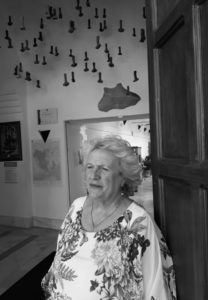“I believe mixing technology and craftsmanship will improve our products.”
Why do you think is important to preserve artisanal know-how and skills?
Because the craftsmen know how to make the most of their creativity and the tools, how to use materials with minimal waste, and how to make their work more sustainable in the broader sense of the word.
Why is craftmanship still relevant today?
It is important to understand the skills and know-how of a centenary tradition so that people appreciate the “ins and outs” of making a product. This way not only can the artisans keep making a good product, but they can improve them. I believe mixing technology and craftsmanship will improve our products.
Why do you think is important for Young designers to learn about the history of Ubrique?
In this village we have fourth and fifth generation artisans that came here to work in the leather industry with some of the best-known companies like Loewe, Chanel, Louis Vuitton. Their work talks about overcoming difficulties. Any designer that understands this and is able to see it will also be able to translate it into his/her collections and make it to the highest level. It also tells them that if the artisans made it, they can also made it.
Why is the making of the “preciso” an essential part of the visit to the Museum?
First, because it is the oldest item in maroquinerie I could find. It is a small bag that farmers and shepherds used to keep their tobacco dried and it has the simplicity and ingenuity of these parts. I love it. Secondly, because it is an income source for the Museum. Those five euros people pay for it help us to be self-sufficient. But most importantly, because it is part of our history.
Do you think the leather industry can become sustainable?
I am sure of it. There is currently a lot of research on sustainability taking place and some of the materials like the sewing threads that are used in maroquinerie are already sustainable. There is also a history of repurposing and recycling in the industry. In Ubrique we were already sustainable in 1800; we we used to tan the leather with the tannings from the cork oak. We were also isolated from other villages, so the use and reuse of local products was a must.
Which is your favourite piece in the Museum?
A personalised handbag made of small leftover pieces of leather. I like it because in this bag one can see 100 years of tradition and history; the women that used to clean the factories took the leather left on the floor of those factories to make their own handbags to later exchange them for food or other objects with merchants and people in the market.
How was working with ViaTalenta?
Working with ViaTalenta has been a great experience. It has given me the opportunity to work with an international group, while sharing with them the special and very important knowledge there is in this place. I have dedicated my life to give leather craftsmanship the relevance in the world it deserves, so being able to work with the next generation of designers has been something special.


